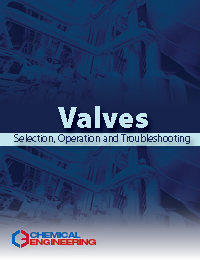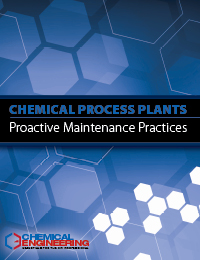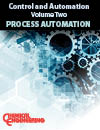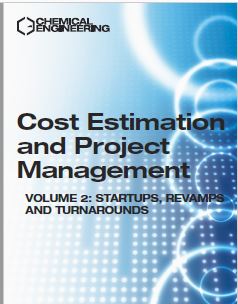Description
This Chemical Engineering guidebook contains dozens of practical, how-to engineering articles that were originally published in Chemical Engineering, as well as useful guide sheets.
The tutorial-style articles contained in this volume provide detailed guidance for the selection, installation, operation and troubleshooting of control valves, which are ubiquitous throughout the chemical process industries.
Several articles focus on pressure-relief valves, in terms of device selection and installation and overall system design and management. There is additional emphasis on materials selection, safe operation at ultra-low temperature, optimization of valves in pneumatic conveying systems, rational pipeline design, and more.
This guidebook is available in PDF format only, 152 pages.
Contents include:
- Principles of P&ID Development: The tips provided here will streamline efforts to develop piping & instrumentation diagrams
- Control Valves: An Evolution in Design: Understanding the design features of globe-style control valves can help in selection for specific applications
- Extremely Low-Temperature Systems: Understanding the nuances of low-temperature engineering is key to safe and efficient operations
- Engineering for Plant Safety: Early process-hazards analyses can lead to potential cost savings in project and plant operations
- Avoiding Pressure Relief Problems
- Control Valve Position Sensors
- Control Valve Performance
- Liquefied- Industrial-Gas Safety
- Valves
- Creating Installed Gain Graphs for Control Valves
- Using Rupture Disks with Pressure Relief Valves
- Advances in Valve Position Monitoring: New control-valve technologies improve performance and lower costs
- Managing Pressure while Pigging an Oil Pipeline: Pressure control valves can manage pressure in oil pipelines, but pigging the line presents a challenge
- Chemical Process Plants: Plan for Revamps: Follow this guidance to make the most of engineering upgrades that are designed to improve plant operations or boost throughput capacity
- Sizing Calculations for Pressure-Relief Valves: A universal mass-flux equation can improve sizing calculations for pressure-relief valves with non-ideal fluids
- Safety-Instrumented Systems: Control Valves As Final Elements: The scenarios presented here highlight the advantages and disadvantages of using a control valve in an SIS
- Overpressure Protection: Consider Low Temperature Effects in Design: Understanding the inherent limitations of current overpressure-protection analyses is key to developing a more robust heuristic
- Lifecycle Costs for Capital Equipment in the CPI: Long-term equipment costs need to be fully considered in capital-cost assessments
- Rotary Valves in Pneumatic Conveying Systems: Because of their wide application in pneumatic conveying systems, it is important to understand how rotary valves are designed and used
- Control Valve Selection: True Cost Savings are Available: Control valves must respond quickly and accurately in a variety of process conditions. Selecting the proper equipment enhances process economics, safety and efficiency
- Valve-Selection Best Practices: Precise combinations of valves and other equipment lead to process success. A biopolymer fermentation process provides an example of proper valve selection
- Piping Design for Hazardous Fluid Service: Extra considerations and precautions are needed beyond the requirements of codes and standards
- Vapor Depressurization: Concept and Implementation: When carrying out depressurization calculations, special attention is needed for critical equipment and systems such as rotating equipment, columns and reactors
- Combining the use of Rupture Discs with Relief Valves: Using the two devices together offers significant benefits in chemical processes. Here is how to take advantage of them
- Dilute-phase Pneumatic Conveying: Instrumentation and Conveying Velocity: Follow these guidelines to design a well-instrumented and controlled system, and to optimize its conveying velocity
- Rules of Thumb For Pneumatic Conveying Pipelines: Proper design, configuration and layout of the conveying pipeline are critical for successful and trouble-free operation
- Piping-System Leak Detection and Monitoring for the CPI: Eliminating the potential for leaks is an integral part of the design process that takes place at the very onset of facility design
- Control Valve Diagnostics: The proof is in the process, as exemplified in this former HART Plant of the Year winner. This process economic evaluation helps frame the business case
- Large-Scale Fermentation Systems: Hygienic Design Principles: Follow these tips to optimize systems that use microbial fermentation to produce biochemicals and biopharmaceutical
- Valves & Specialty Metal Materials: Advances in material science are minimizing the tradeoffs we face in material selection for valves
- Pressure Transmitter Basics: Selection Guidelines: Climbing the decision tree to pick the right pressure sensor
- Improving the Operability of Process Plants: Turndown and rangeability have a big impact on the flexibility and efficiency of chemical process operations




